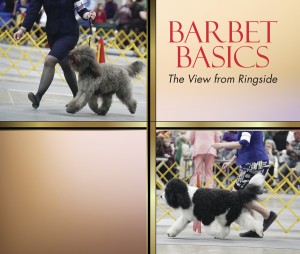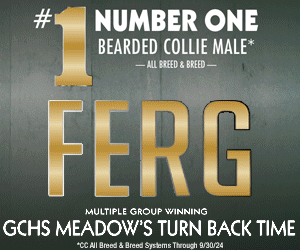Barbet Basics – The View from Ringside
Click here to read the complete article
 By Leslie Woodward
By Leslie Woodward
The words of one breeder/exhibitor sum up the Barbet’s entrance into the AKC Sporting Group in January 2020:
“I’ve dreamed of showing my Barbet in regular AKC competition for 10 years but I don’t think I allowed myself to think of how I would feel when that day actually came.”
The warm welcome from the dog show community has been overwhelming. Applause as we entered the ring for the first time, the kind and congratulatory words from judges, the interest and encouragement from other exhibitors and handlers have all made the breed’s debut both heartwarming and memorable. Full AKC recognition through FSS and Miscellaneous is a long and bumpy road, but with great cooperation among the members of the Barbet Club of America we’ve accomplished our goal and now move on to a new chapter of protecting and promoting this amazing breed.
Collected here are some important points in our standard we’re often asked about by “ringside judges”. Even when unable to go over the dogs, one should still be able to identify the best of an entry. General rules of soundness apply, of course, but a Barbet must look and act like a Barbet.
An agile athlete, the Barbet (pronounced bar-BAY), also known as the French Water Dog, was developed to locate, flush, and retrieve waterfowl in the icy marshlands of 16th century France. Every bit a sporting dog with both power and grace, the breed is rustic (uncomplicated, unfancy, unexaggerated), retaining most of its original characteristics. The breed’s resurgence from near extinction is due to the hard work of an international community of fanciers. Of great importance to the development of several familiar breeds including the Bichon, Briard and Newfoundland, the Barbet is well deserving of AKC recognition.
Click here to read the complete article

Short URL: https://caninechronicle.com/?p=193058
Comments are closed











